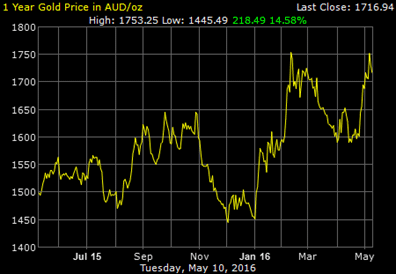That pause you hear in the war on cash? That’s your enemy reloading with the next volley. Swiss bank UBS has warned its private clients that it may cost them to hold cash with the bank. That is not a misprint. It’s the world we live in, where banks charge you money on your savings.
You can’t blame the bank’s CEO Sergio Ermotti for being in a bad mood. He was forced to report to shareholders that the bank’s profits fell 64% in the first quarter. Then, perhaps with rancor, he said the bank could pass on negative rates to depositors, “Or we will have to demand payment for services that were previously free – with the possibility that additional fee adjustments in the future will also be necessary.”
And you wonder why banking is under pressure. Incidentally, the report said the wealth management unit saw the “lowest transaction volumes” ever, which didn’t help earnings. It could be that private clients fear future crackdowns on off-shore tax havens. Or it could be that wealth management units aren’t worth paying for in a low interest rate, low return world.
Or a world with robo-advisors
But back to negative rates. The Swiss National Bank has set its deposit rate at minus 0.75%. It’s been there for over a year. Its main goal is to weaken the Swiss franc and help the Swiss economy remain competitive. Its main side-effect, so far, is that negative rates have been passed on to corporate and institutional borrowers.
Passing on negative rates to retail investors like you is effectively a tax on your savings. Raising prices on your customers (or punishing them for being customers) is not the kind of move to inspire confidence. How long would you keep your money in the bank if you had to pay for the privilege? Assuming you can still get cash, would you rather put it under your mattress?
Yes, it’s a little absurd we’re still having this discussion nearly a year after Tim Price first broached the subject in the London Investment Alert. It shows you that the endgame of the low interest rate era is still ahead. It will end. But are we in for 20 years of Japan-like stagnation and central bank mismanagement? Or will it end more quickly and violently? Hold that thought and have a look at the chart below.

Source: www.goldprice.org
The gold price, measured in Aussie dollars, has twice rallied to $1,750 this year. That won’t mean much to you unless you buy your gold in Australia. But it does show you that when countries engage in currency wars – or drive interest rates down (and negative) in misguided attempts to promote growth – nature’s currency (gold) tends to react.
Gold’s Aussie dollar high was $1,806 in 2011 It’s not that far off. And it might not be long before it makes a new high.
Why?
The Reserve Bank of Australia (RBA) may take official Aussie interest rates negative, says BT Investment Management. If you missed it last week, the RBA cut its cash rate to 1.75% last week. Australia hasn’t had a technical recession in 25 years. But inflation is low and growth is low.
It’s a tough spot for the RBA. The Aussie dollar rode the three phases of the mining/commodities/China boom to well past parity with the US dollar. You had a massive increase in commodity prices when growth in Chinese demand caught supply short (phase one). You had an investment boom which created jobs and led to huge capital flows into the country (phase two). And you had a production boom when new capacity came on stream and generated cash flows even at lower commodity prices (phase three).
And now?
Now you have China saddled with massive debts. You have Europe which can’t seem to grow. And you have a world mired in “emergency” low interest rates that aren’t doing much. Australia finds itself on the wrong end of all of that.
The RBA will do what it can do. But it can’t do much. It can’t liquidate China’s debts. It can’t create demand for commodities. It can’t lower Aussie household debt levels. And it can’t diversify Australia’s economy so it’s not so dependent on rising house prices.
But it can lower interest rates. And if that’s all you can do, it’s probably what you’ll do. “To a man with a hammer, everything looks like a nail,” as the saying goes. And thus the cycle of currency devaluation continues. It’s playing out pretty much like Jim Rickards said it would.

Category: Central Banks

